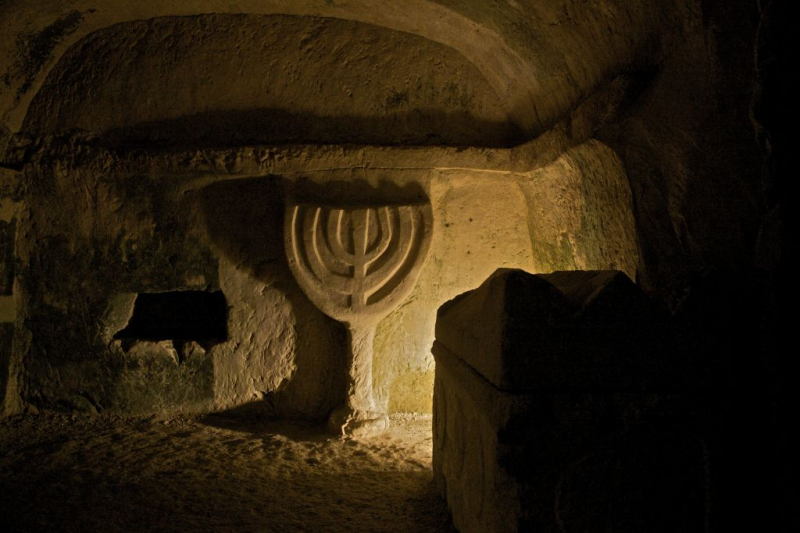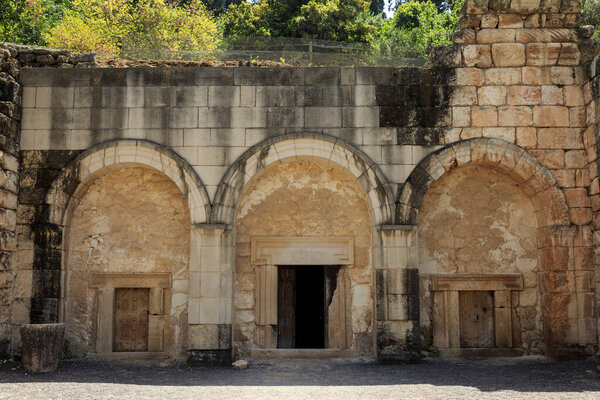Beit She'arim Necropolis

The ancient Jewish settlement of Bet She'arayim or Kfar She'arayim, made famous for its necropolis, now known as Beit She'arim National Park, is today known as Beit She'arim. The location, which was purchased by the Jewish National Fund and identified as Talmudic Beit She'arim by historical geographer Samuel Klein in 1936, was originally known by its Arabic name Sheikh Ibreik or Sheikh Abreik. The archaeological site is mostly made up of a vast necropolis of rock-cut tombs and some ruins of the town itself, which has only been partially investigated. The National Parks Authority is in charge of the site. It is five kilometers west of the moshav named after the historical place in 1926, a decade before its archaeological discovery. It borders the settlement of Kiryat Tiv'on on the northeast. It is located in the southern slopes of the Lower Galilee, 20 kilometers east of Haifa.
The necropolis was designated as a UNESCO World Heritage Site in 2015. More than 30 burial cave systems may be found in the town's enormous necropolis, which is fashioned out of soft limestone. When researchers first discovered the catacombs in the twentieth century, the tombs had already fallen into ruin and neglect, and the sarcophagi contained therein had virtually all been broken into by grave robbers looking for gold. Based on the sort of terra-cotta lamps discovered in the area, the pillaging is thought to have occurred between the 8th and 9th century CE. The robbers also removed the deceased's bones from their stone coffins.
The "Cave of the Coffins" (Catacomb no. 20) functioned as a sanctuary for Arab shepherds during the Mameluk period (13th-15th centuries). In late 1872, Lieutenant C. R. Conder of the Palestine Exploration Fund visited the site and reported one of the cave systems, dubbed "The Cave of Hell" (Mghâret el-Jehennum). He discovered an Agrippa coin while excavating a catacomb, leading him to believe that the ruins date from "later Jewish times, around the Christian era." During his excavations at Sheikh Abreik, Benjamin Mazar uncovered coins from the reigns of Constantine the Great and Constantius II.
Location: Kiryat Tiv'on, Israel






